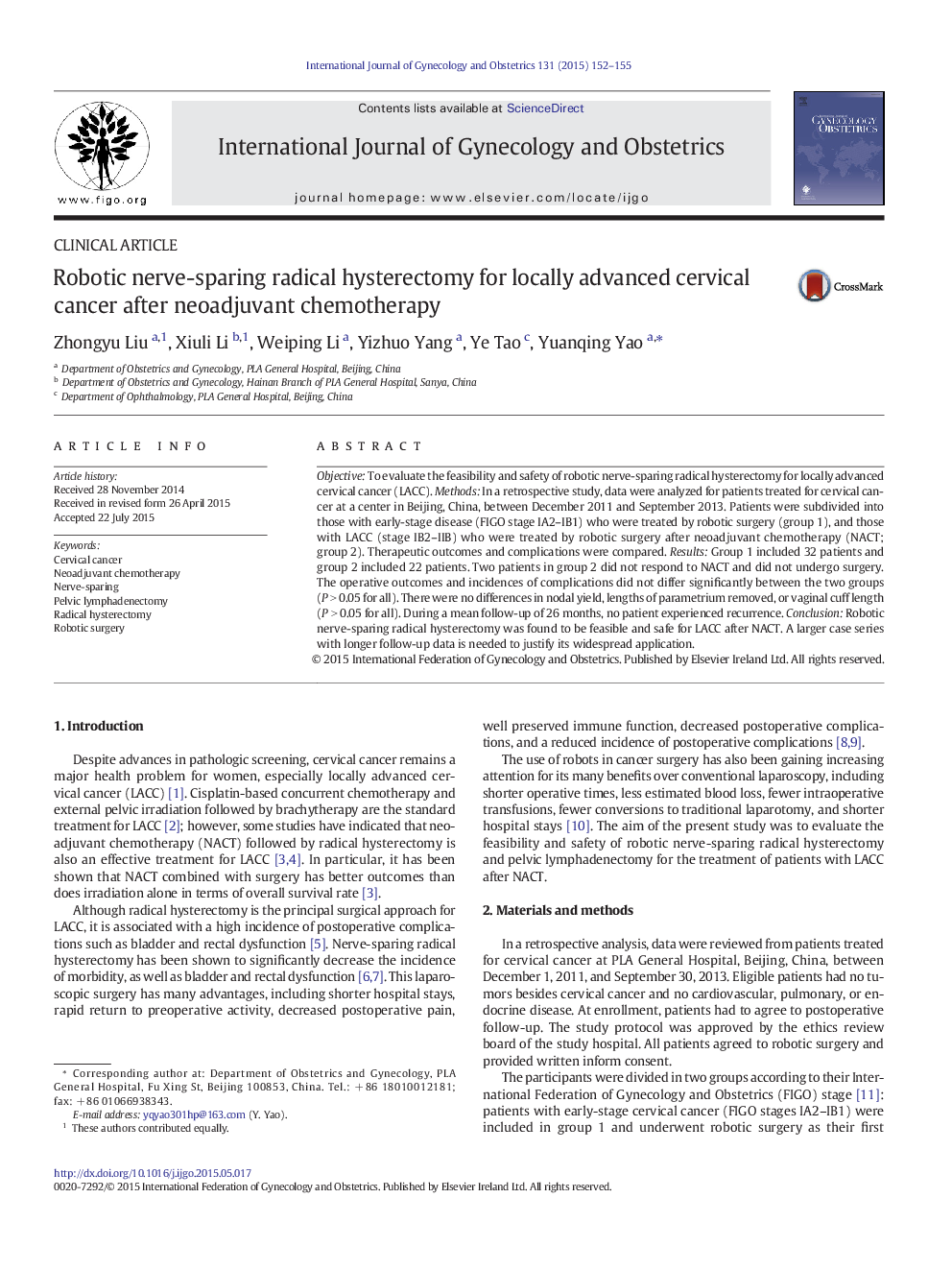| Article ID | Journal | Published Year | Pages | File Type |
|---|---|---|---|---|
| 3954034 | International Journal of Gynecology & Obstetrics | 2015 | 4 Pages |
ObjectiveTo evaluate the feasibility and safety of robotic nerve-sparing radical hysterectomy for locally advanced cervical cancer (LACC).MethodsIn a retrospective study, data were analyzed for patients treated for cervical cancer at a center in Beijing, China, between December 2011 and September 2013. Patients were subdivided into those with early-stage disease (FIGO stage IA2–IB1) who were treated by robotic surgery (group 1), and those with LACC (stage IB2–IIB) who were treated by robotic surgery after neoadjuvant chemotherapy (NACT; group 2). Therapeutic outcomes and complications were compared.ResultsGroup 1 included 32 patients and group 2 included 22 patients. Two patients in group 2 did not respond to NACT and did not undergo surgery. The operative outcomes and incidences of complications did not differ significantly between the two groups (P > 0.05 for all). There were no differences in nodal yield, lengths of parametrium removed, or vaginal cuff length (P > 0.05 for all). During a mean follow-up of 26 months, no patient experienced recurrence.ConclusionRobotic nerve-sparing radical hysterectomy was found to be feasible and safe for LACC after NACT. A larger case series with longer follow-up data is needed to justify its widespread application.
